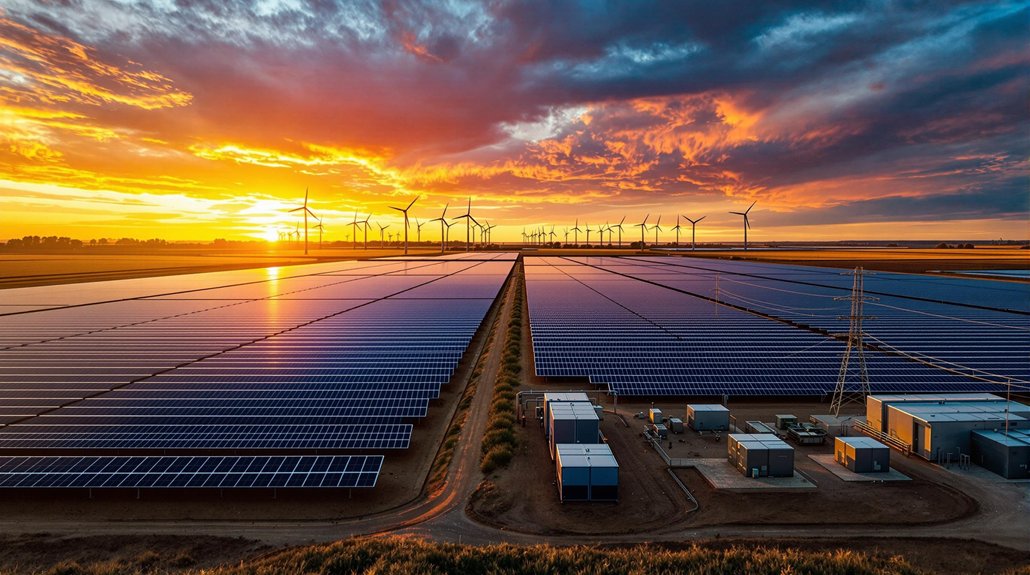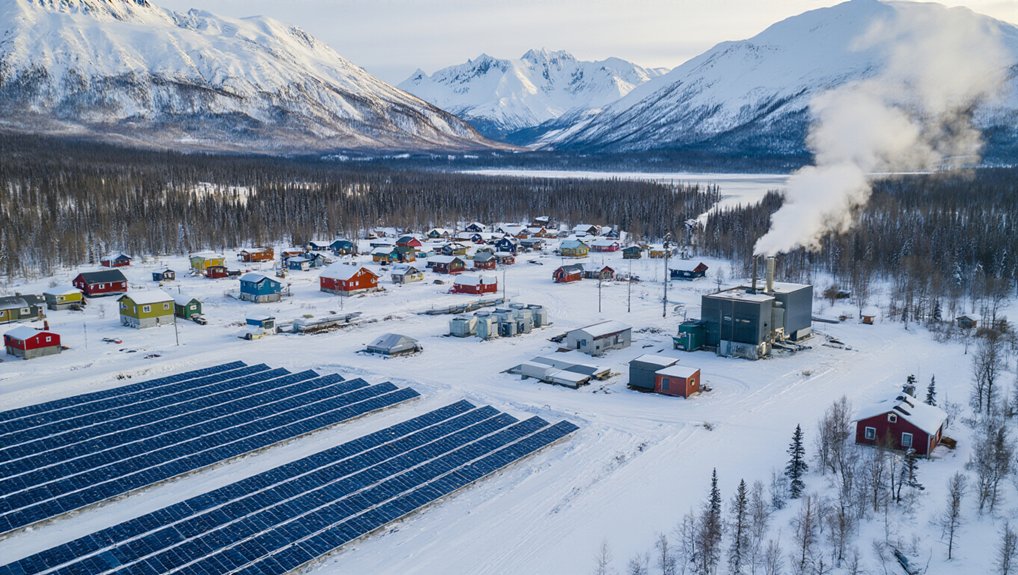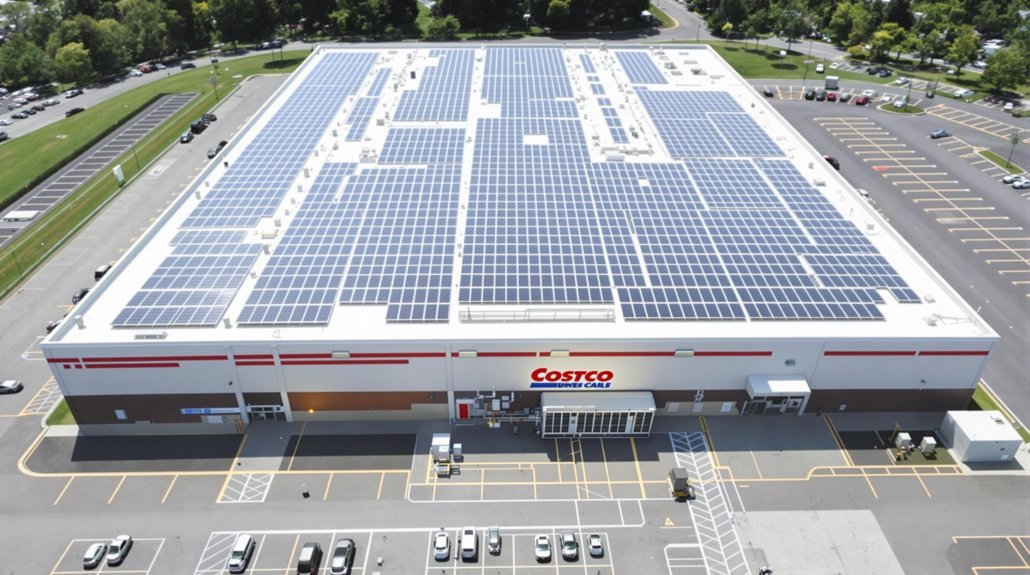The US power grid is undergoing a historic shift as solar and wind reached record levels in 2024, providing 17% of America’s electricity. Renewable output has tripled since 2015, with 30 states now generating at least 10% of power from these sources. The April 8 solar eclipse tested grid resilience, but operators successfully managed the challenge using battery storage. This transformation continues to accelerate across the country.
As renewable energy continues to transform America’s power landscape, solar and wind generation has reached record levels in 2024, now providing 17% of the nation’s electricity. This represents a tripling of renewable output since 2015, with solar and wind now generating 756,621 GWh annually. Thirty states now produce at least 10% of their electricity from these clean energy sources.
Solar power has shown the most dramatic growth, increasing nearly eight-fold over the past decade, while wind grew 2.4 times. Texas, California, and Iowa lead the nation in solar and wind expansion. This growth shows no signs of slowing, with 20.2 GW of utility-scale capacity added in the first half of 2024 alone.
Of these new additions, solar dominated with 12 GW, representing 59% of all new power capacity. Battery storage came in second at 21% (4.2 GW), while wind added 2.5 GW. An additional 42.6 GW of new capacity is planned for the second half of 2024.
The April 8 total solar eclipse offered a real-world test of grid resilience. The eclipse affected 91.3 GW of solar capacity, reducing output by up to 93% in Texas. Grid operators successfully managed this challenge by increasing other generation sources and using battery storage to balance supply.
Despite the rapid integration of intermittent resources, the U.S. power grid remained reliable through summer 2024, with no major outages reported. In Texas and California, solar combined with battery storage helped meet peak demand periods. Solar provided 21% of power during Texas’s peak hours, with batteries discharging in the evenings as solar output declined.
Battery storage capacity grew 66% in 2024, reaching 15.4 GW nationwide—a dramatic increase from just 0.6 GW in 2017. This growth supports renewable integration by time-shifting generation to meet demand. The implementation of smart grid technology has significantly enhanced the reliability of renewable energy systems during extreme weather events. In 2024, the total renewable output powered more than 70 million American homes, demonstrating the significant impact of clean energy expansion.
Looking ahead, experts say transmission capacity may need to double by 2050 to fully accommodate renewable expansion. Recent extreme weather events have highlighted this need for stronger regional connections.









